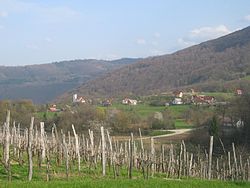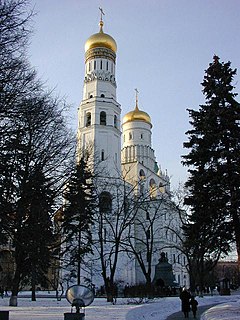| Male Vodenice | |
|---|---|
 | |
| Coordinates: 45°49′27.47″N15°23′43.29″E / 45.8242972°N 15.3953583°E Coordinates: 45°49′27.47″N15°23′43.29″E / 45.8242972°N 15.3953583°E | |
| Country | |
| Traditional region | Lower Carniola |
| Statistical region | Lower Sava |
| Municipality | Kostanjevica na Krki |
| Area | |
| • Total | 5.6 km2 (2.2 sq mi) |
| Elevation | 387.4 m (1,271.0 ft) |
| Population (2002) | |
| • Total | 33 |
| [1] | |
Male Vodenice (pronounced [ˈmaːlɛ ʋɔdɛˈniːtsɛ] ; German : Kleinwodenitz [2] ) is a settlement in the Gorjanci Hills in the Municipality of Kostanjevica na Krki in eastern Slovenia. Its territory extends right to the border with Croatia. The area was traditionally part of Lower Carniola. It is now included in the Lower Sava Statistical Region. [3]

German is a West Germanic language that is mainly spoken in Central Europe. It is the most widely spoken and official or co-official language in Germany, Austria, Switzerland, South Tyrol (Italy), the German-speaking Community of Belgium, and Liechtenstein. It is also one of the three official languages of Luxembourg and a co-official language in the Opole Voivodeship in Poland. The languages which are most similar to German are the other members of the West Germanic language branch: Afrikaans, Dutch, English, the Frisian languages, Low German/Low Saxon, Luxembourgish, and Yiddish. There are also strong similarities in vocabulary with Danish, Norwegian and Swedish, although those belong to the North Germanic group. German is the second most widely spoken Germanic language, after English.

The Municipality of Kostanjevica na Krki is a municipality in the traditional Lower Carniola region of southern Slovenia. The seat of the municipality is the town of Kostanjevica na Krki. It is part of the Lower Sava statistical region. It is located in the northern foothills of the Gorjanci Hills and extends to the border with Croatia.

Slovenia, officially the Republic of Slovenia, is a sovereign state located in southern Central Europe at a crossroads of important European cultural and trade routes. It is bordered by Italy to the west, Austria to the north, Hungary to the northeast, Croatia to the southeast, and the Adriatic Sea to the southwest. It covers 20,273 square kilometers (7,827 sq mi) and has a population of 2.07 million. One of the successor states of the former Yugoslavia, Slovenia is a parliamentary republic and a member of the United Nations, of the European Union, and of NATO. The capital and largest city is Ljubljana.
The local church, built on a hill east of the main settlement, is dedicated to the Virgin Mary and belongs to the Parish of Kostanjevica na Krki. It is a 14th-century Gothic building with a belfry. Its main and side altars date to the 18th century. [4]

A church building or church house, often simply called a church, is a building used for Christian religious activities, particularly for Christian worship services. The term is often used by Christians to refer to the physical buildings where they worship, but it is sometimes used to refer to buildings of other religions. In traditional Christian architecture, the church is often arranged in the shape of a Christian cross. When viewed from plan view the longest part of a cross is represented by the aisle and the junction of the cross is located at the altar area.

Gothic architecture is a style that flourished in Europe during the High and Late Middle Ages. It evolved from Romanesque architecture and was succeeded by Renaissance architecture. Originating in 12th-century France, it was widely used, especially for cathedrals and churches, until the 16th century.

A bell tower is a tower that contains one or more bells, or that is designed to hold bells even if it has none. Such a tower commonly serves as part of a church, and will contain church bells, but there are also many secular bell towers, often part of a municipal building, an educational establishment, or a tower built specifically to house a carillon. Church bell towers often incorporate clocks, and secular towers usually do, as a public service.



